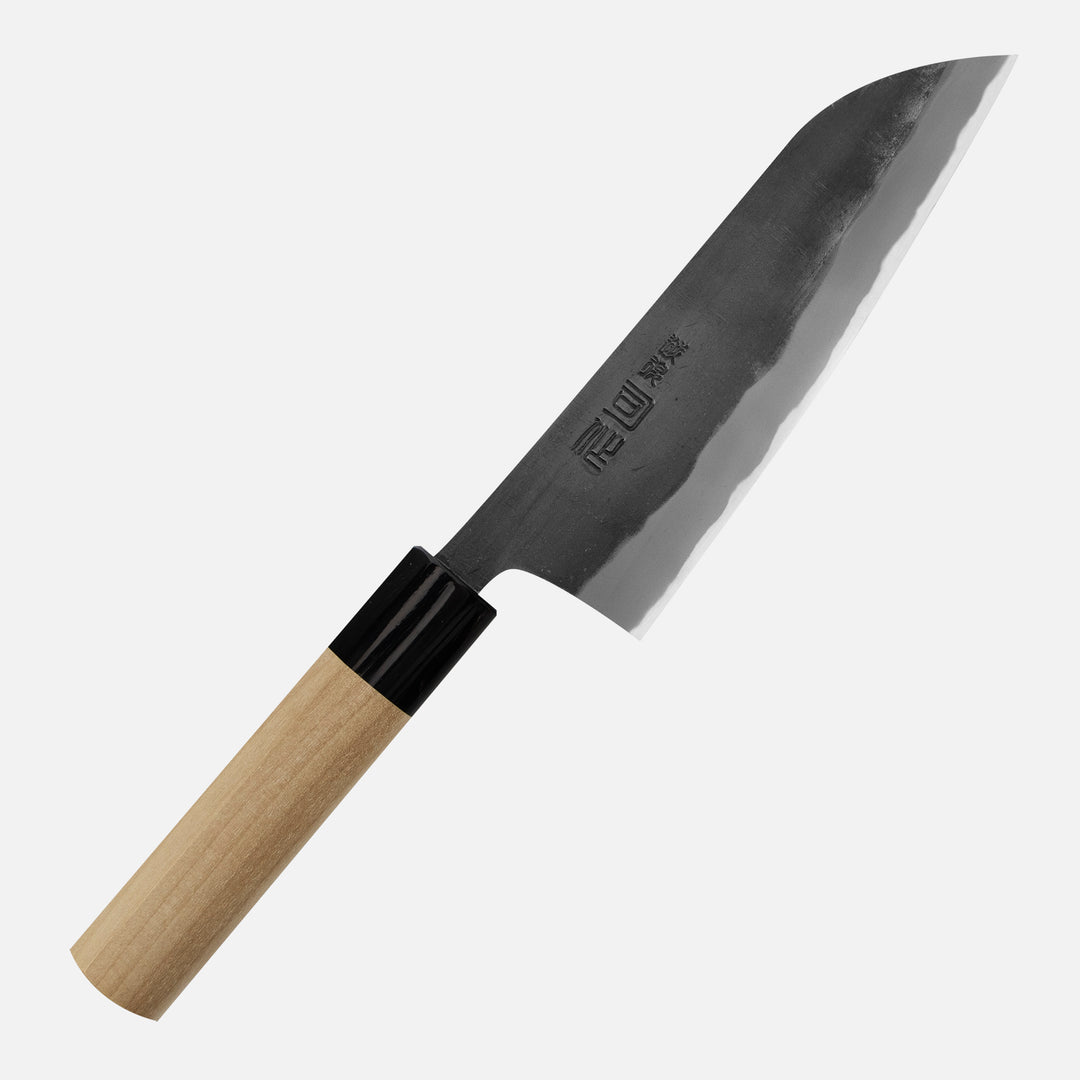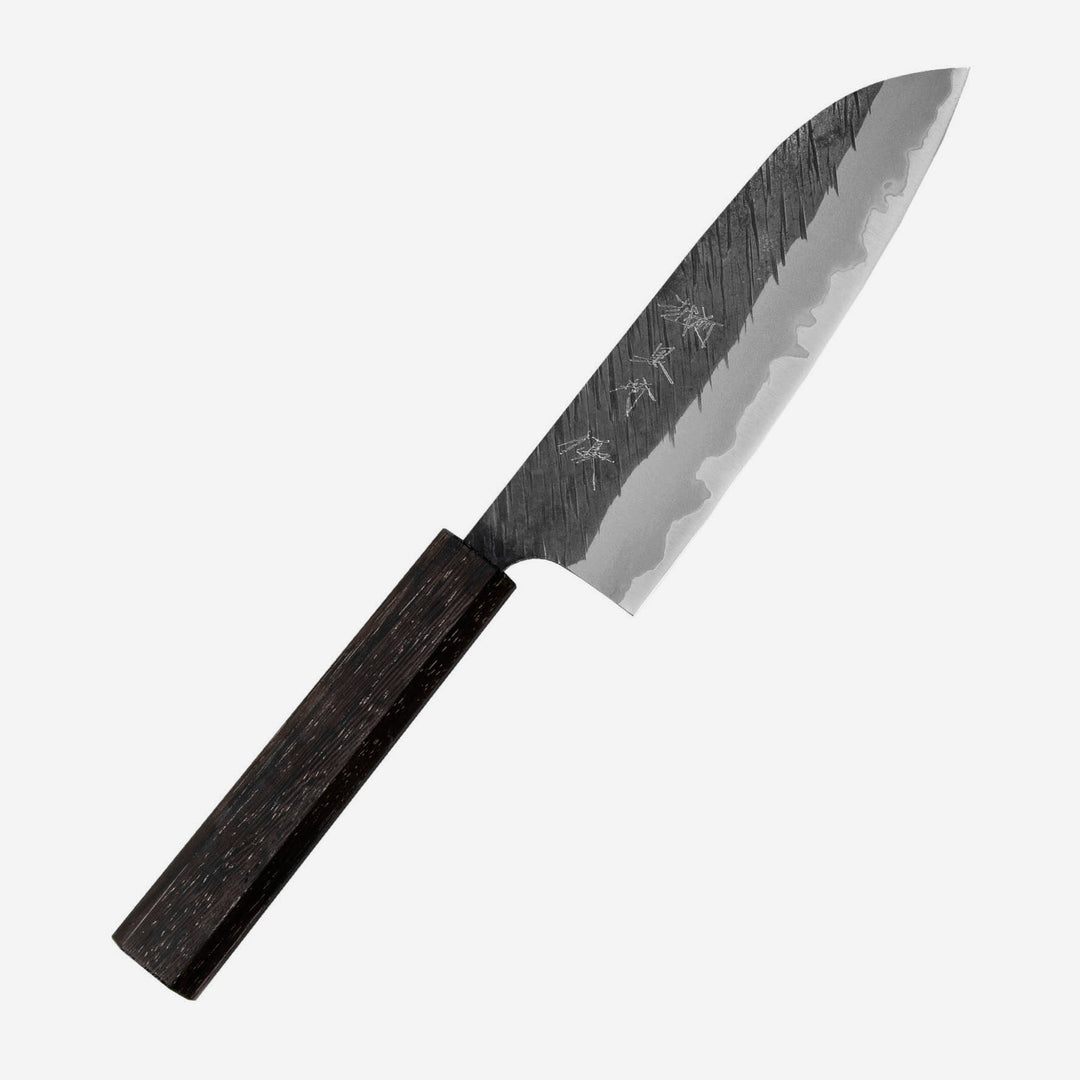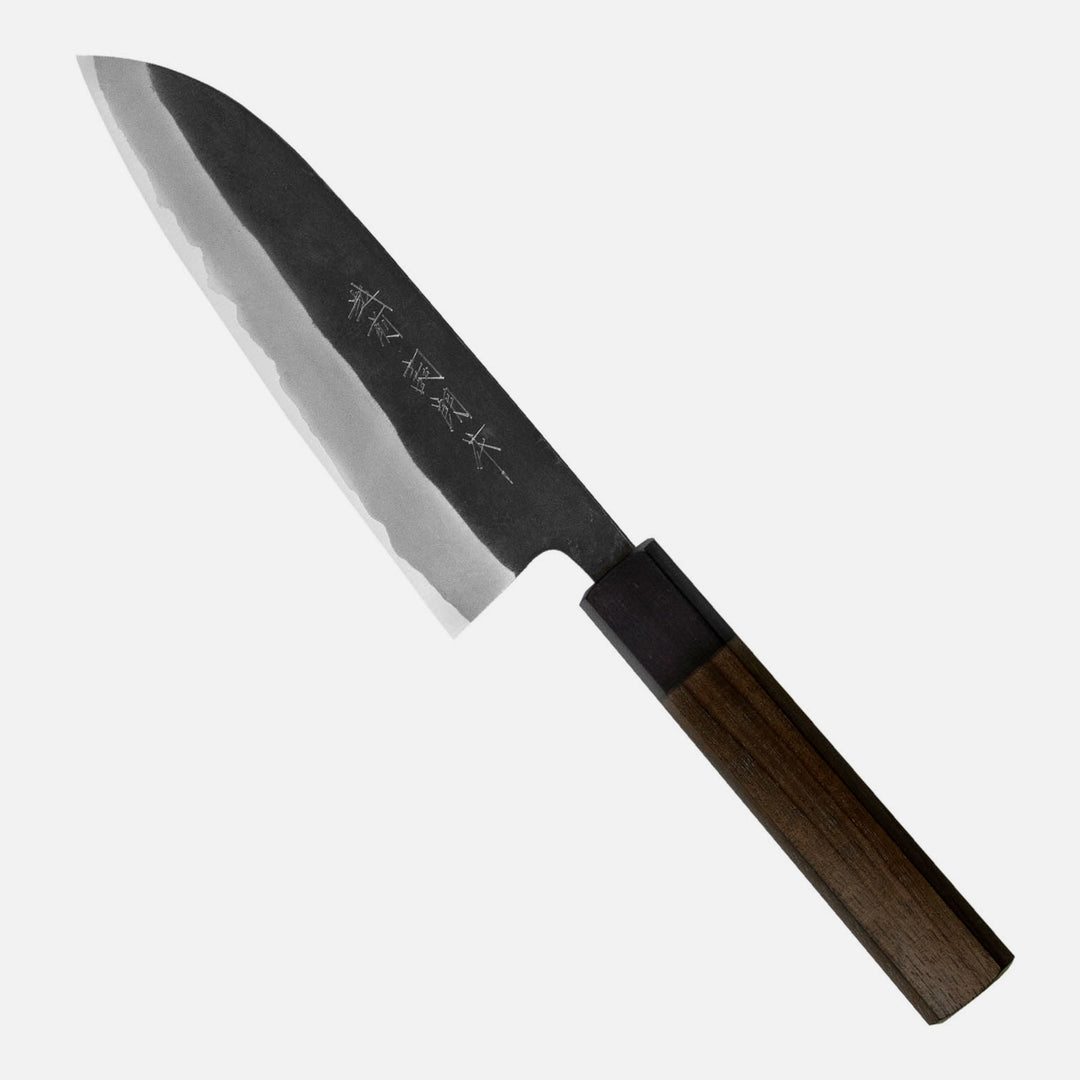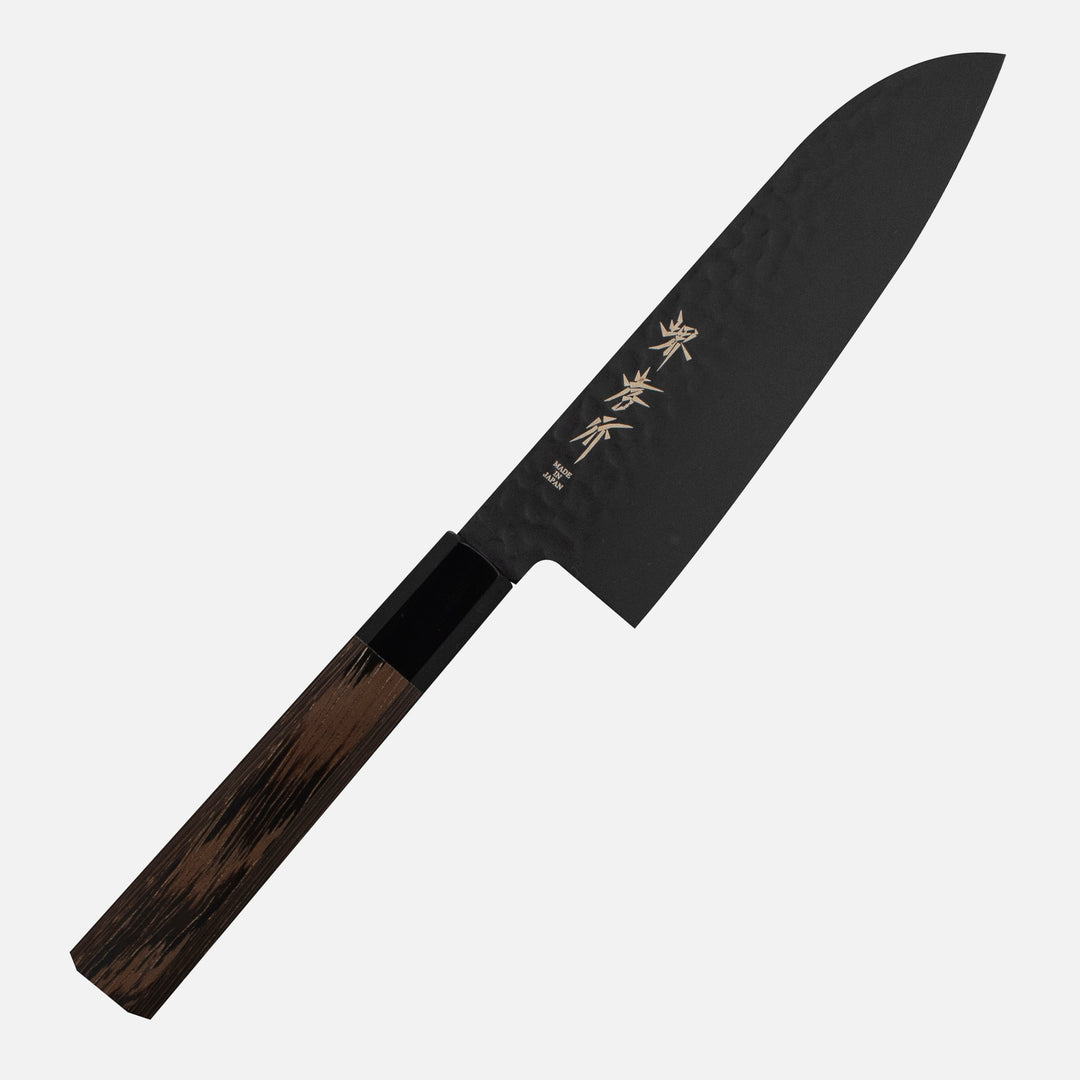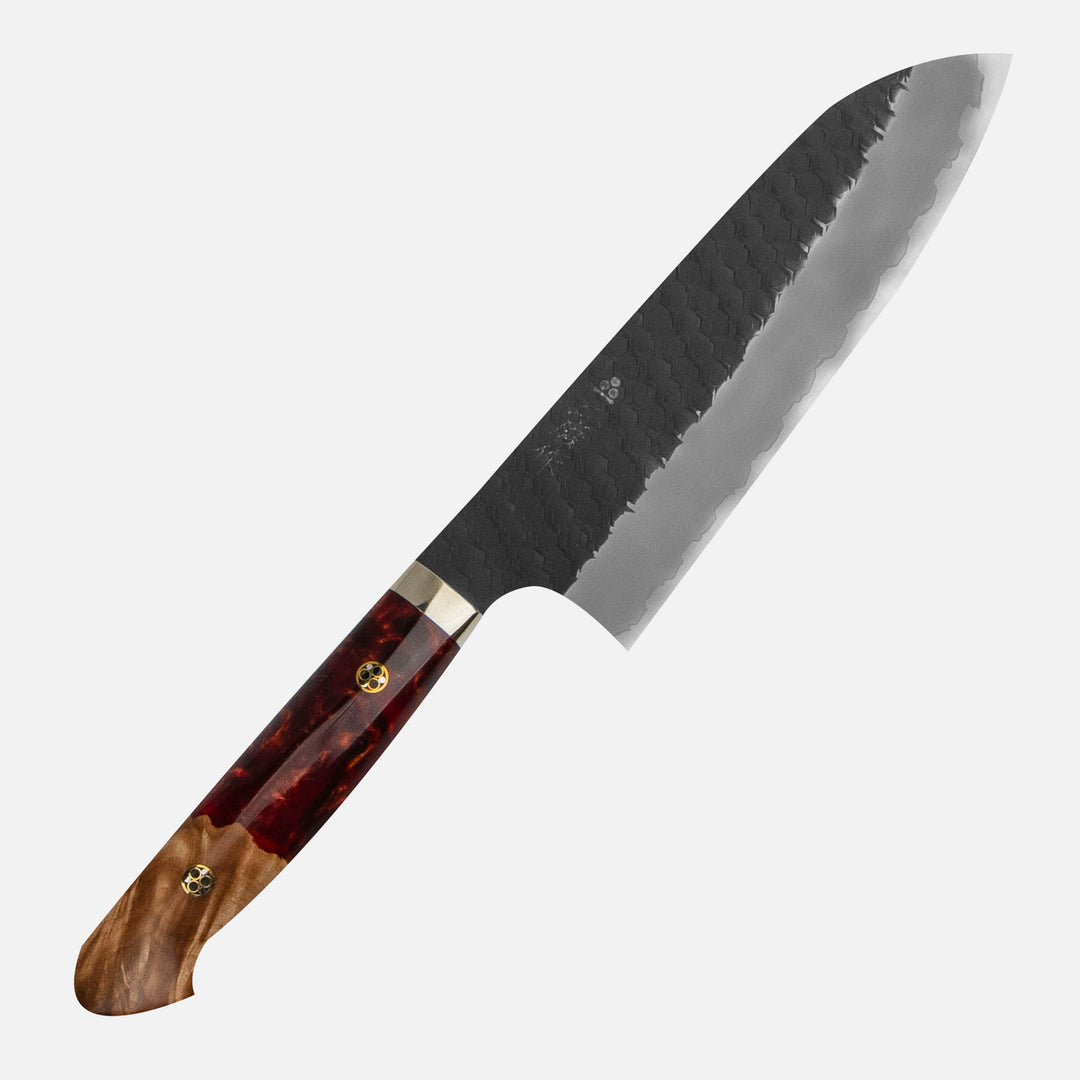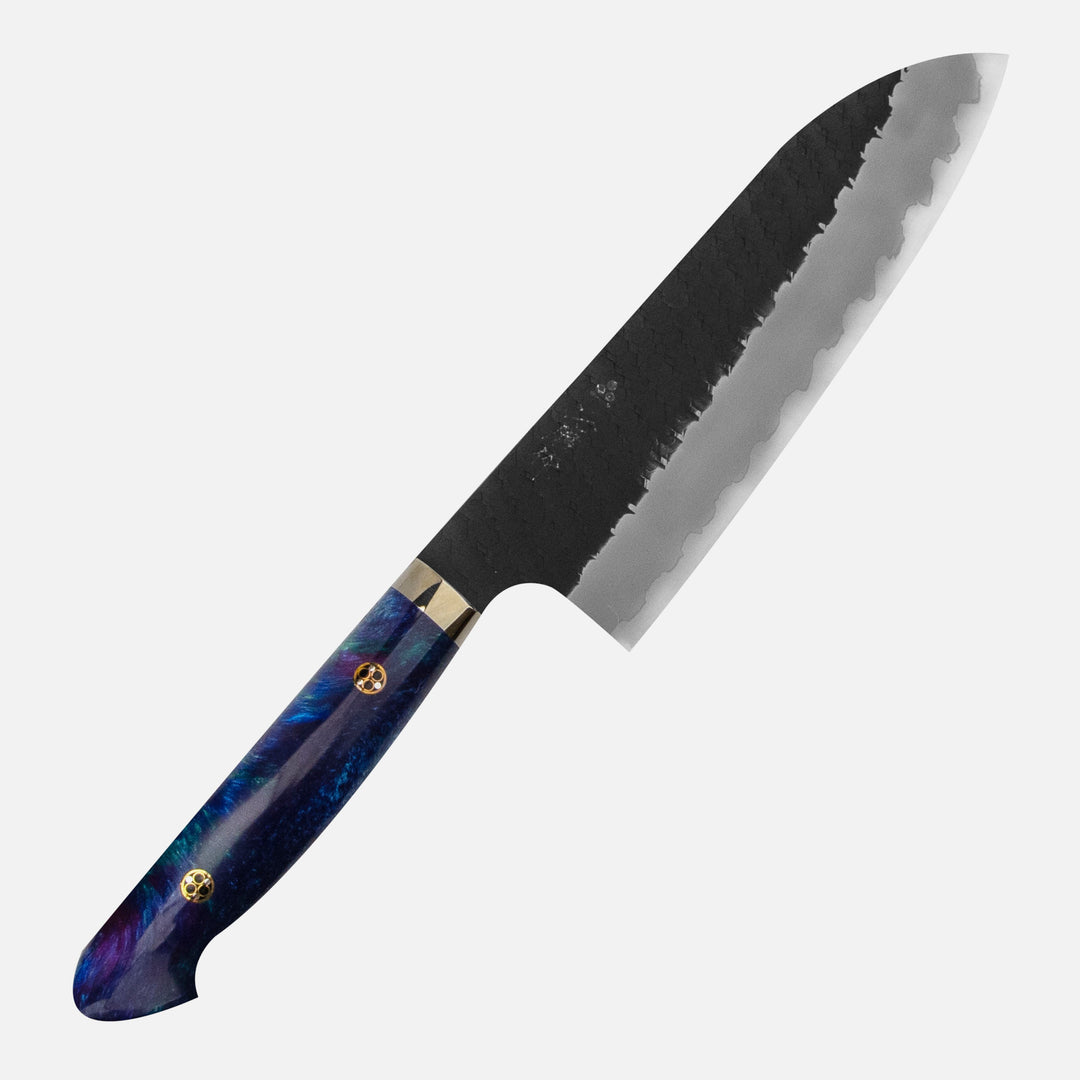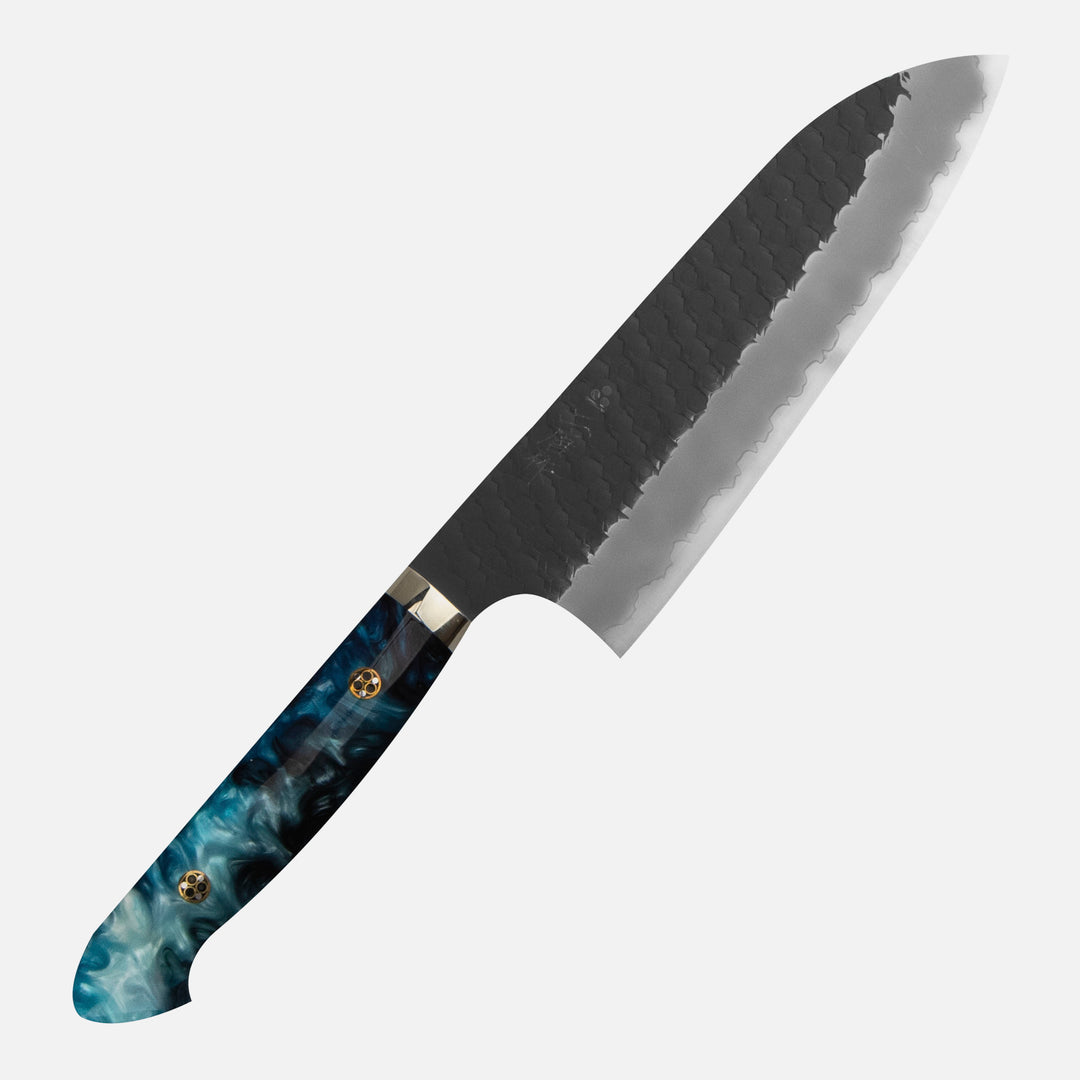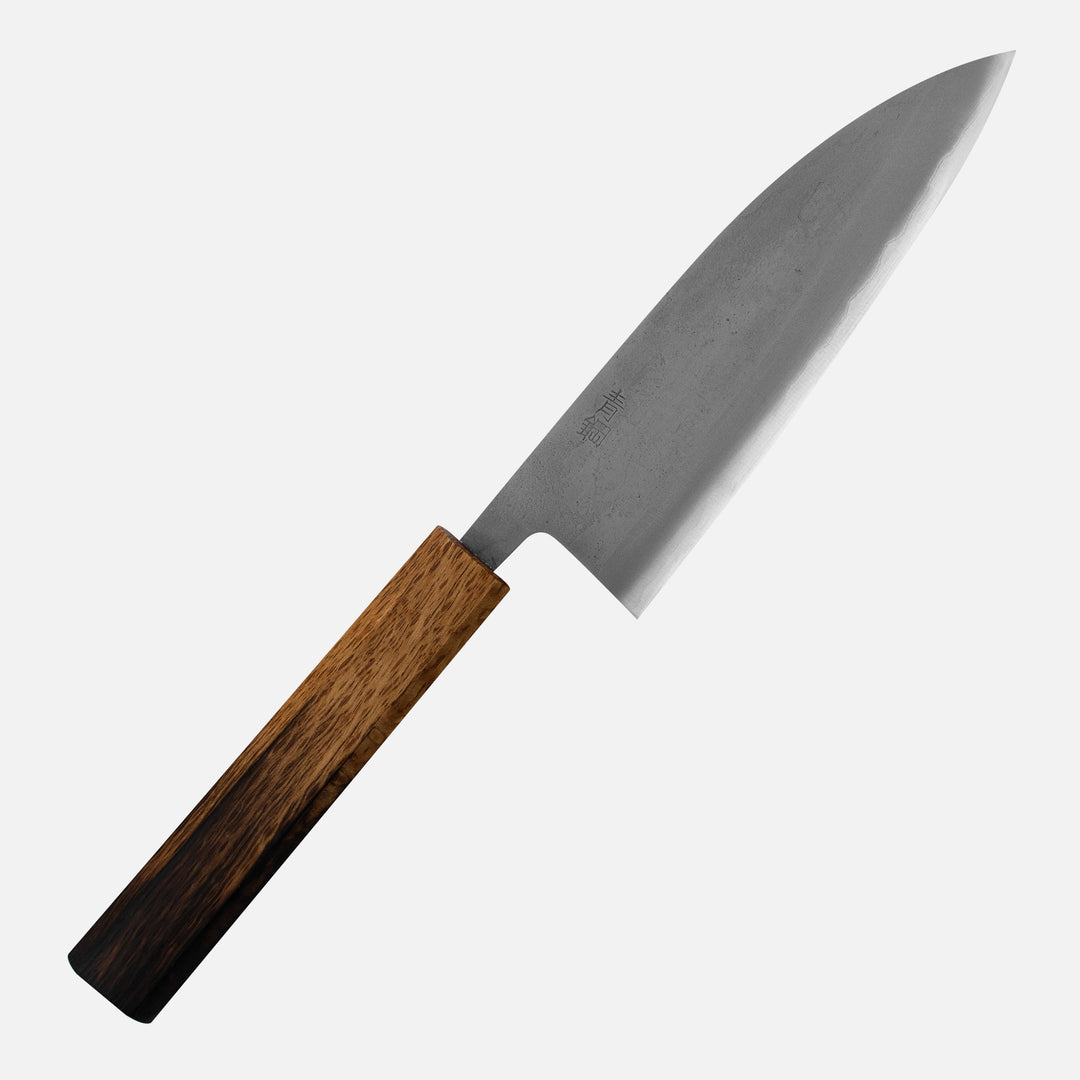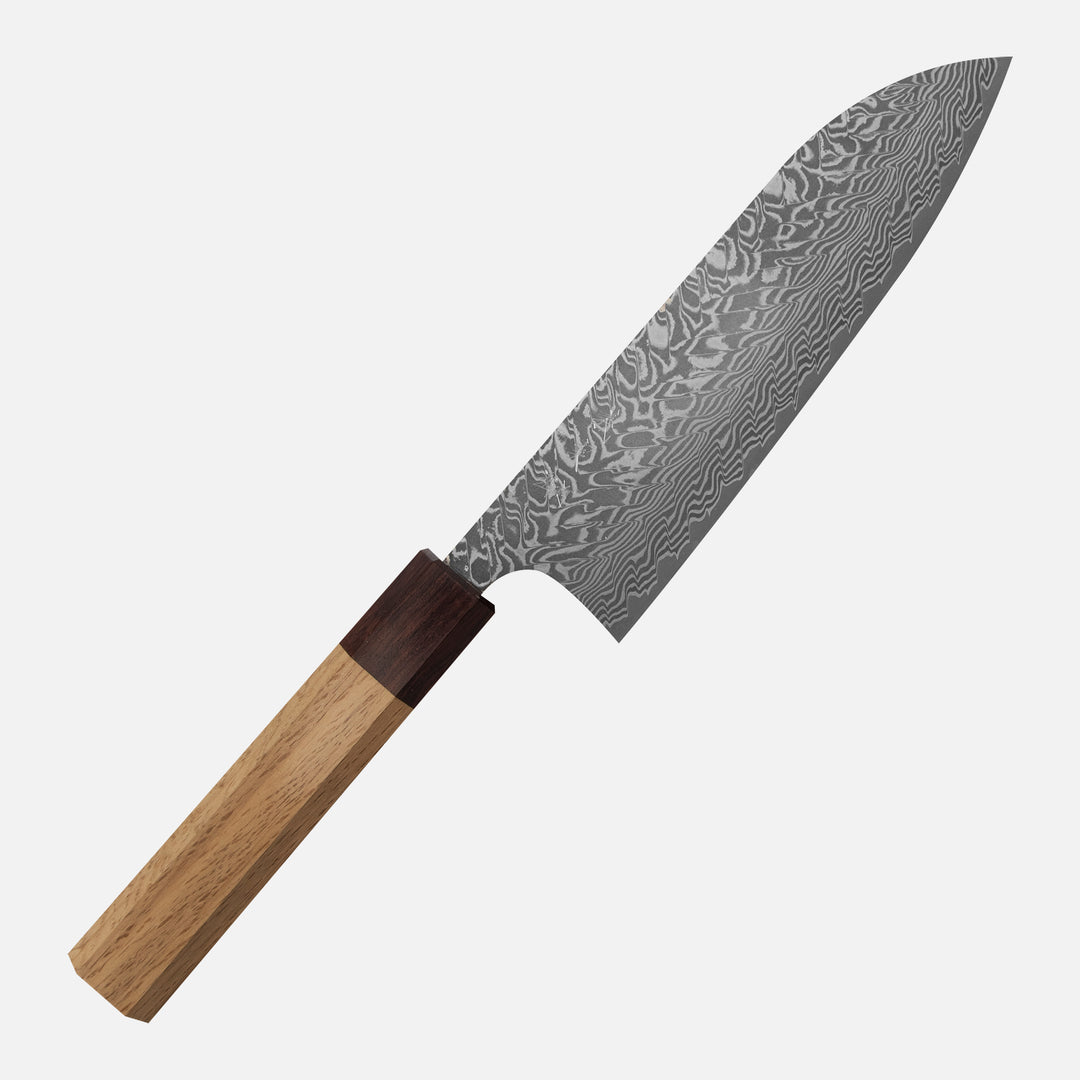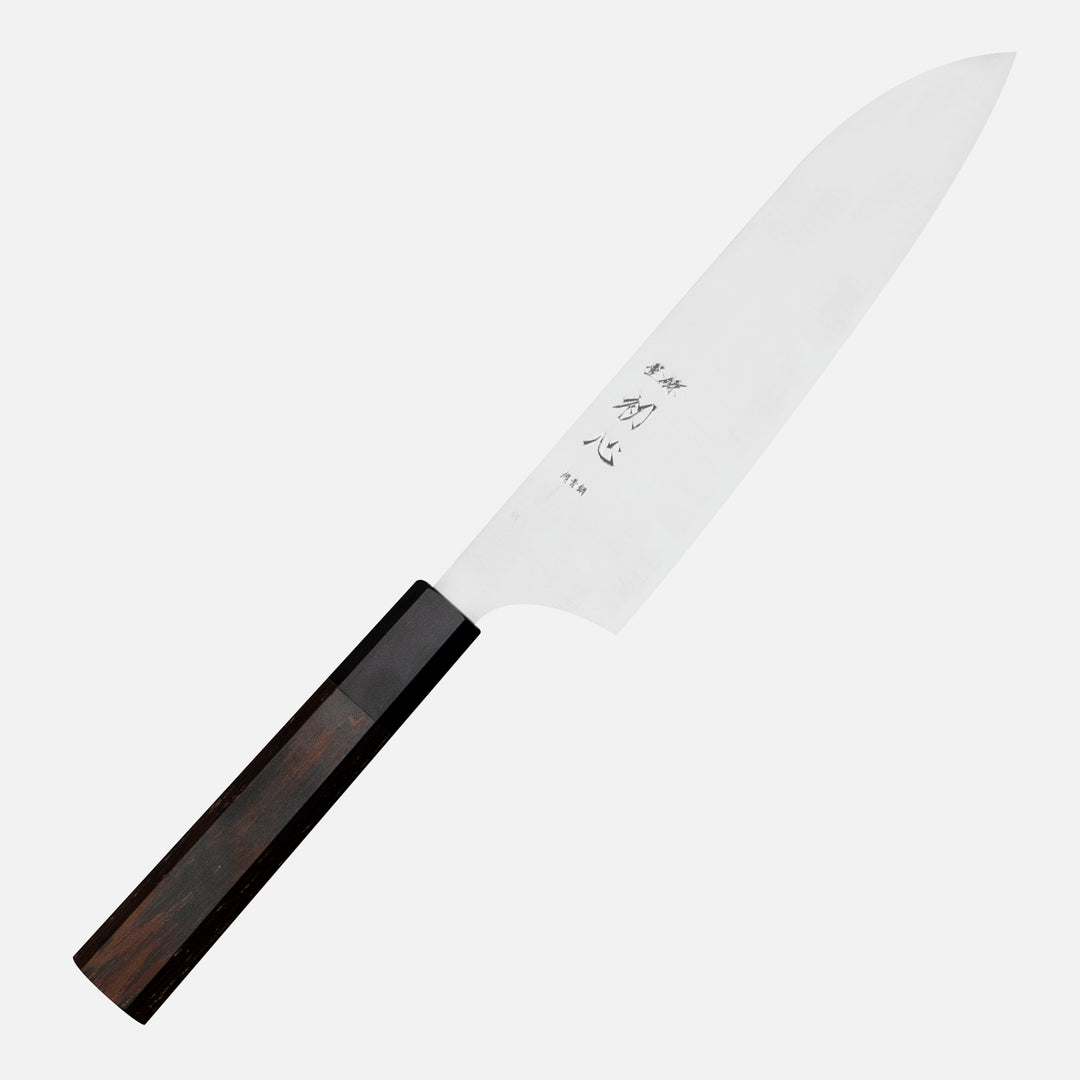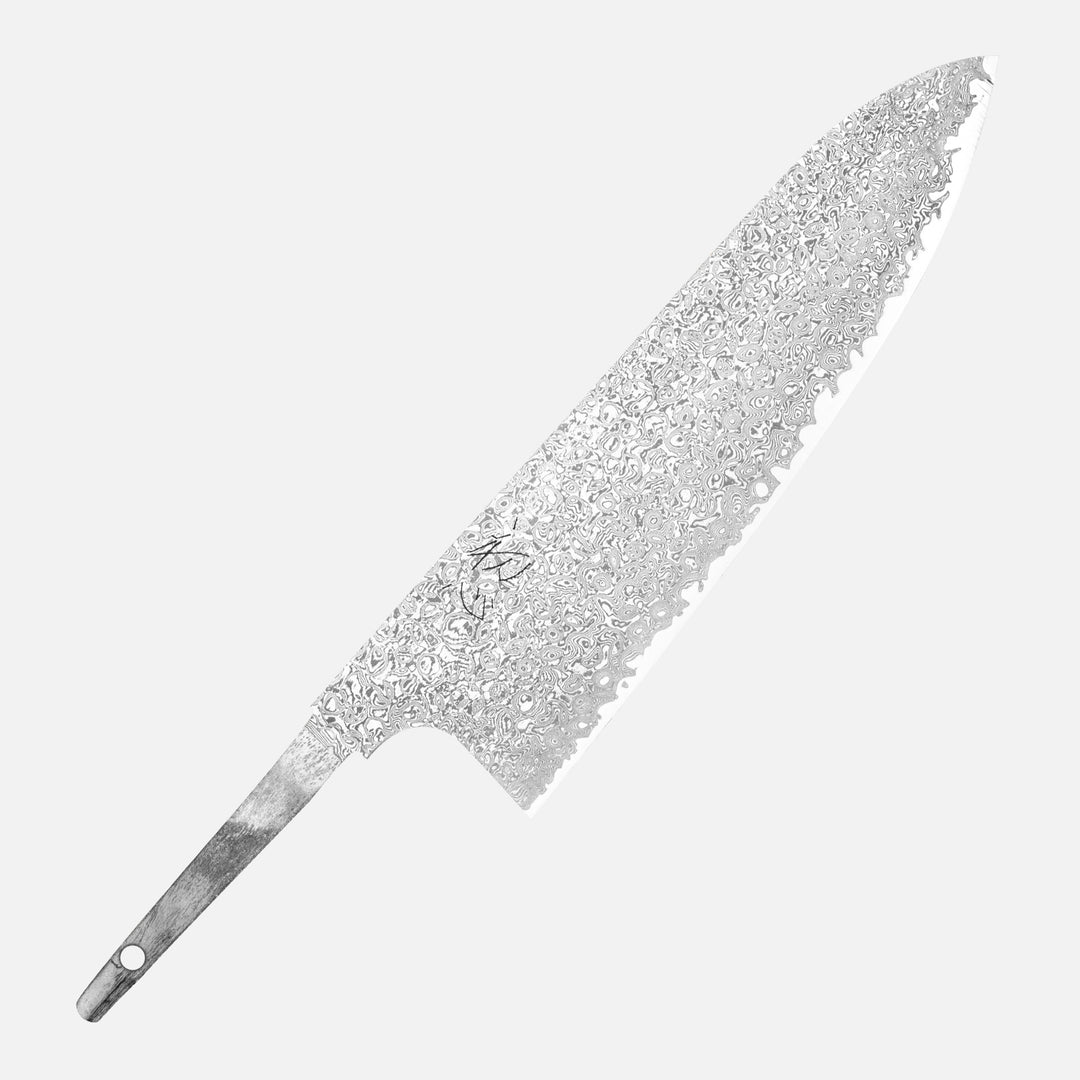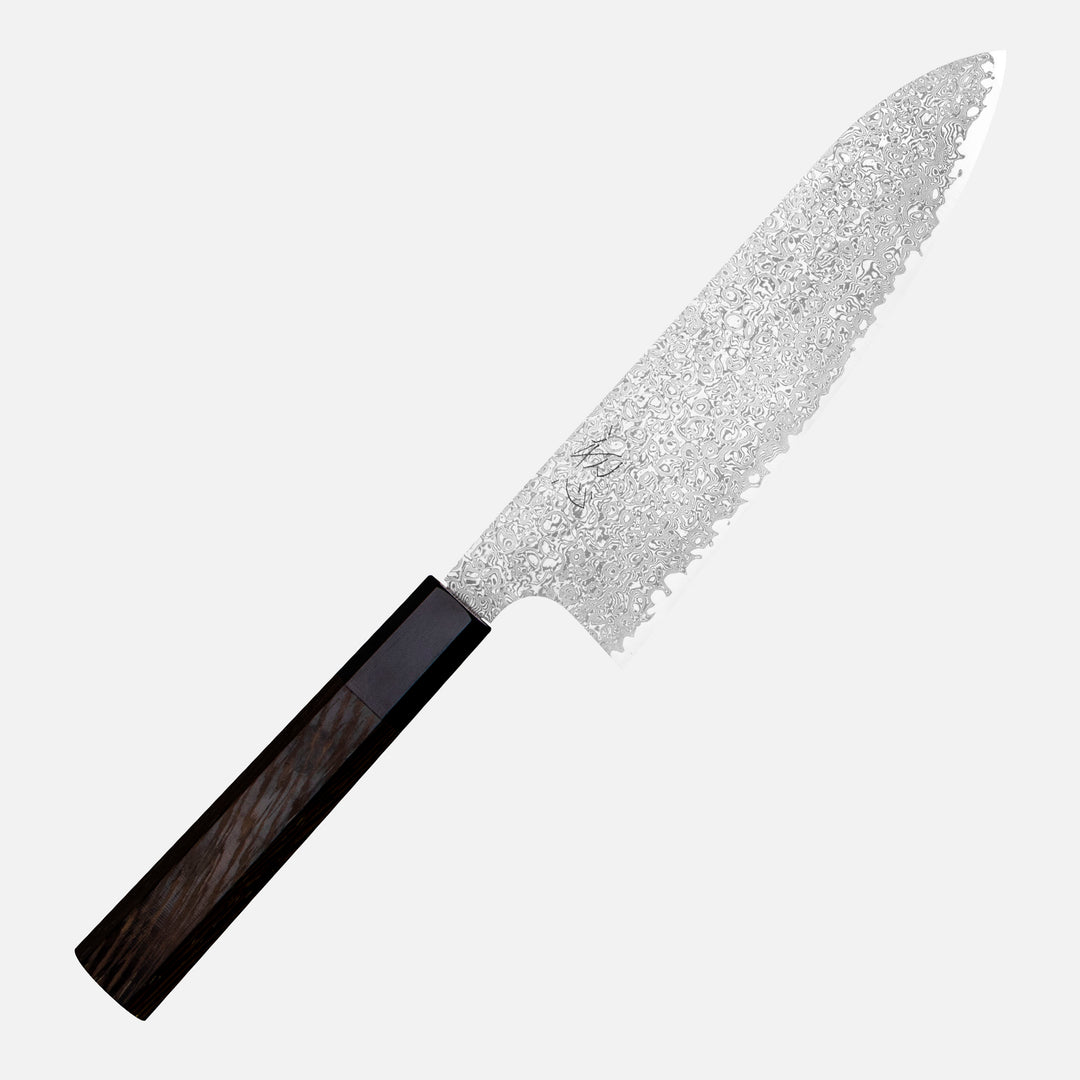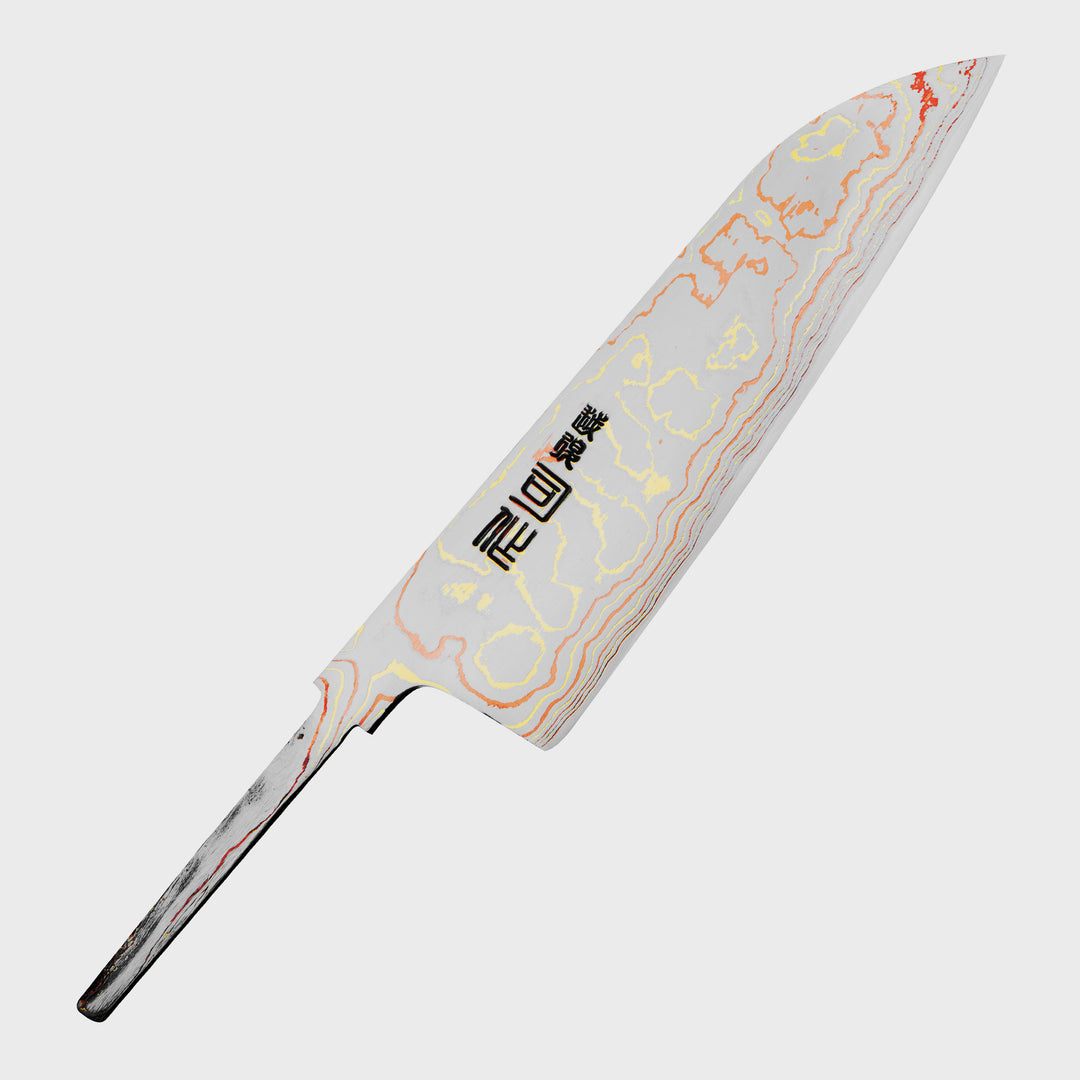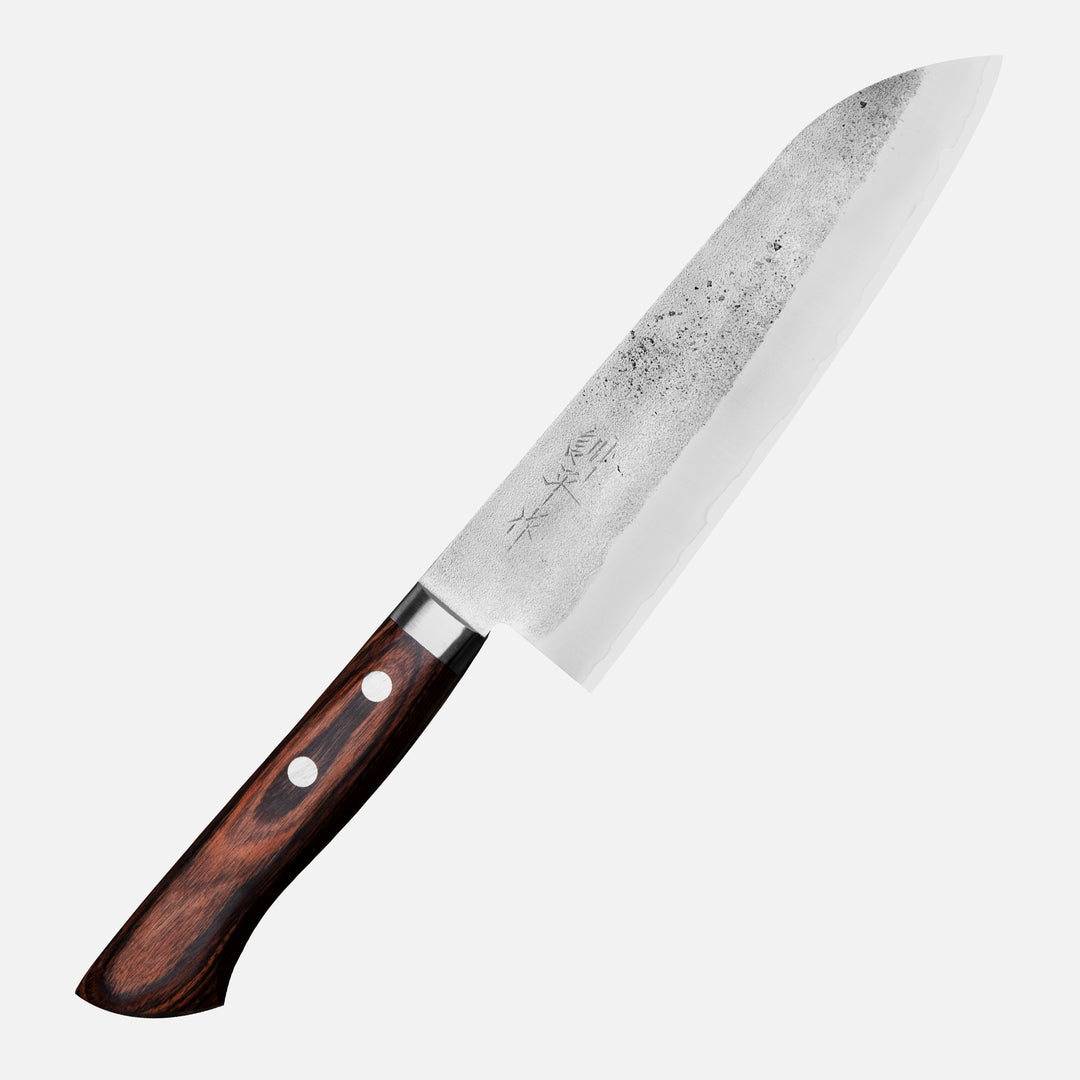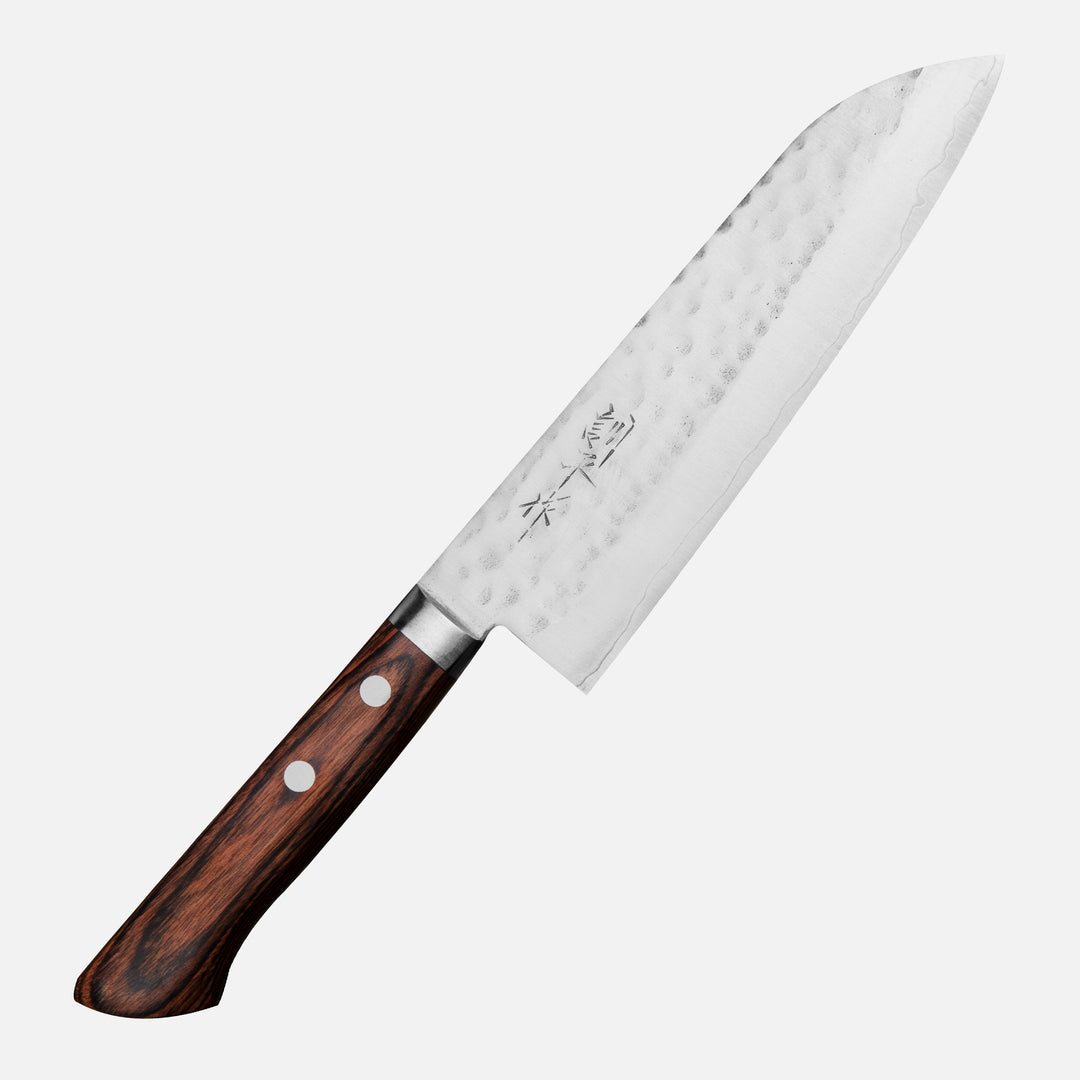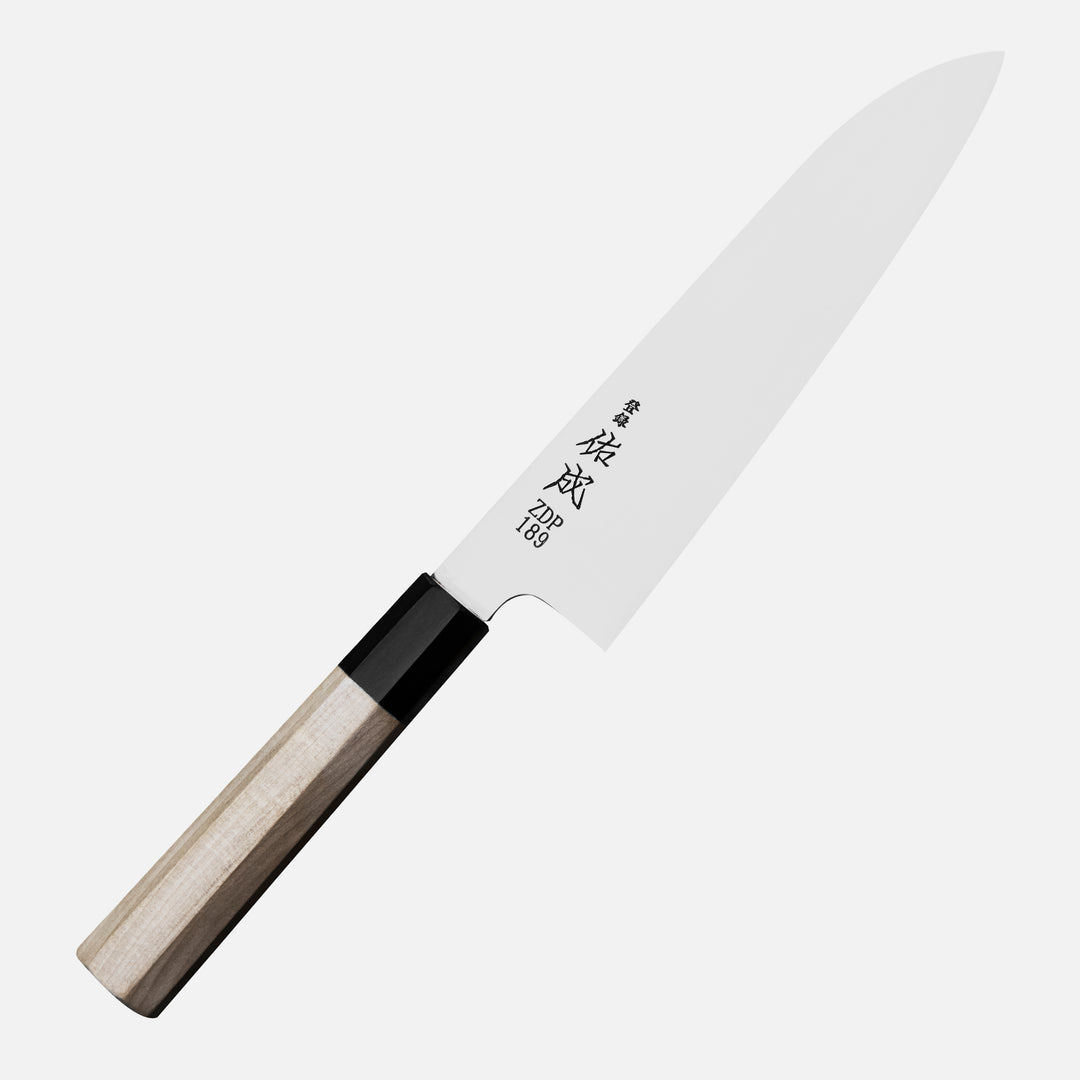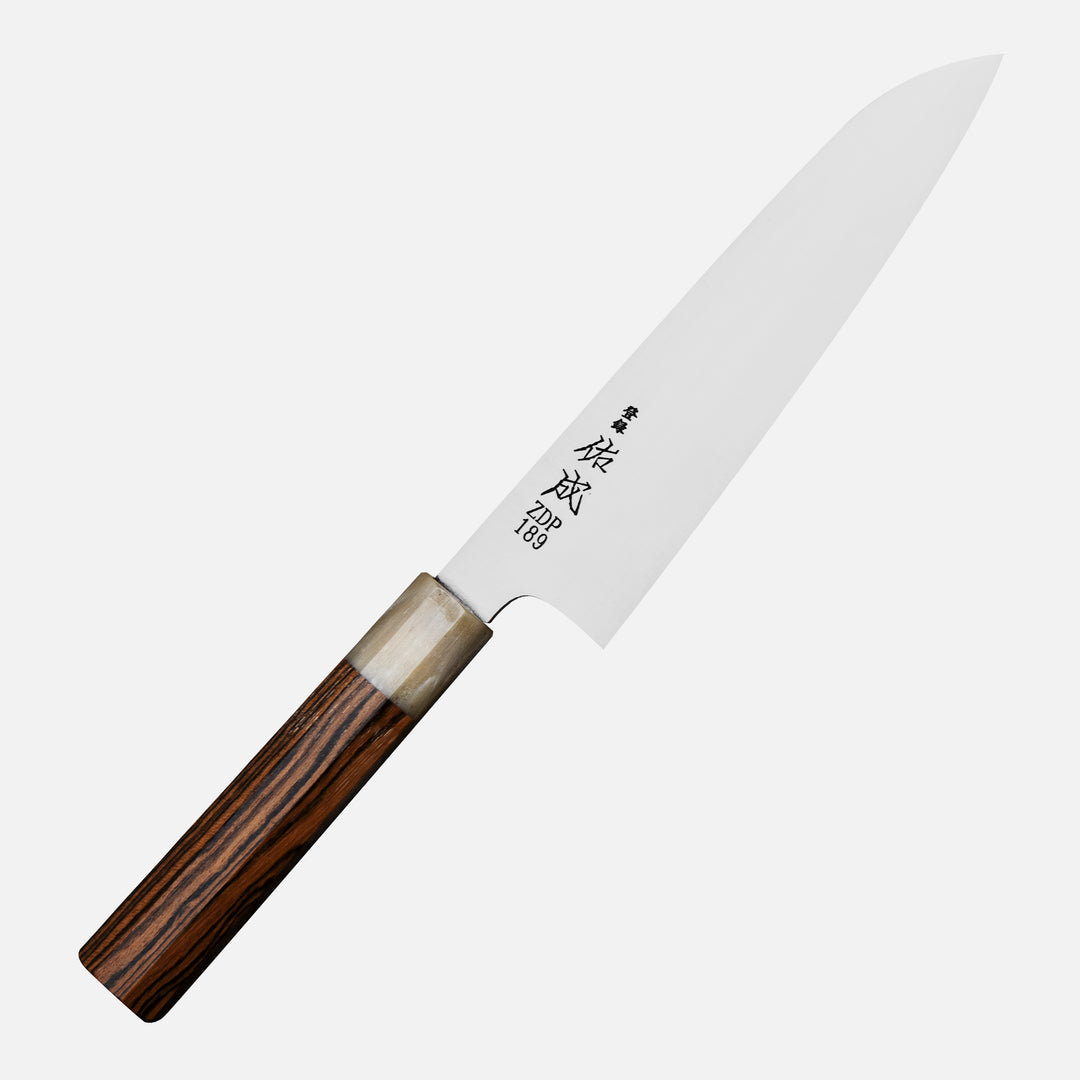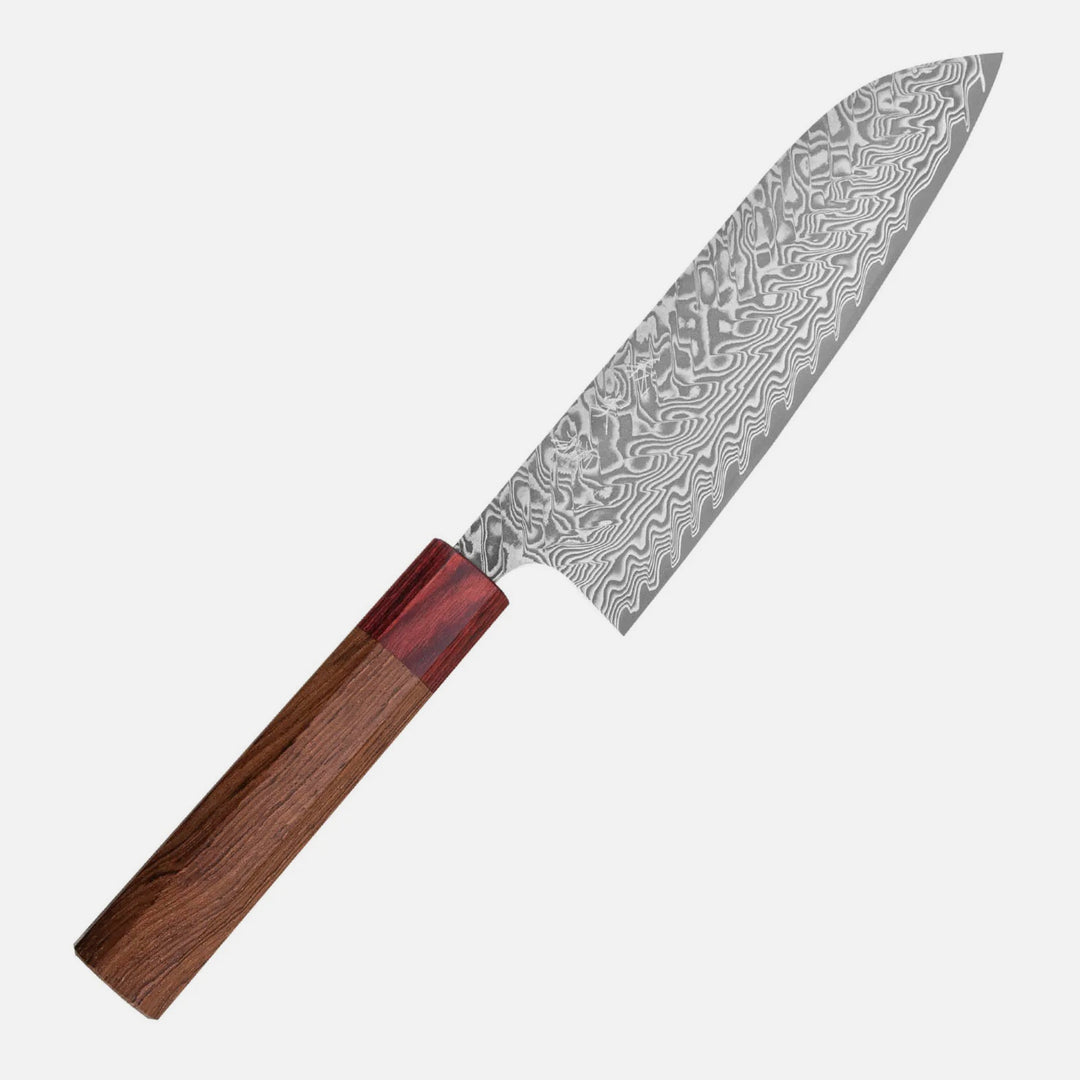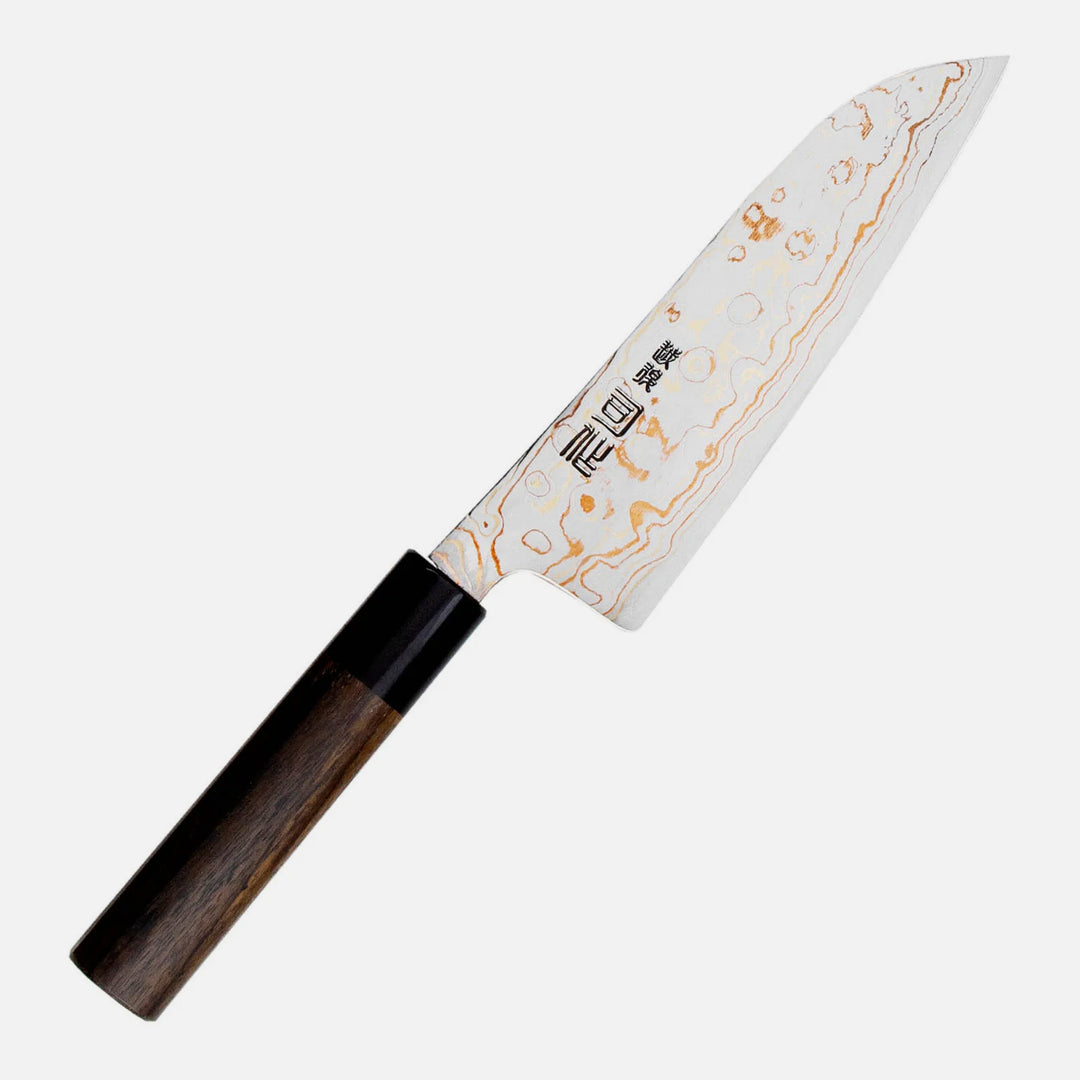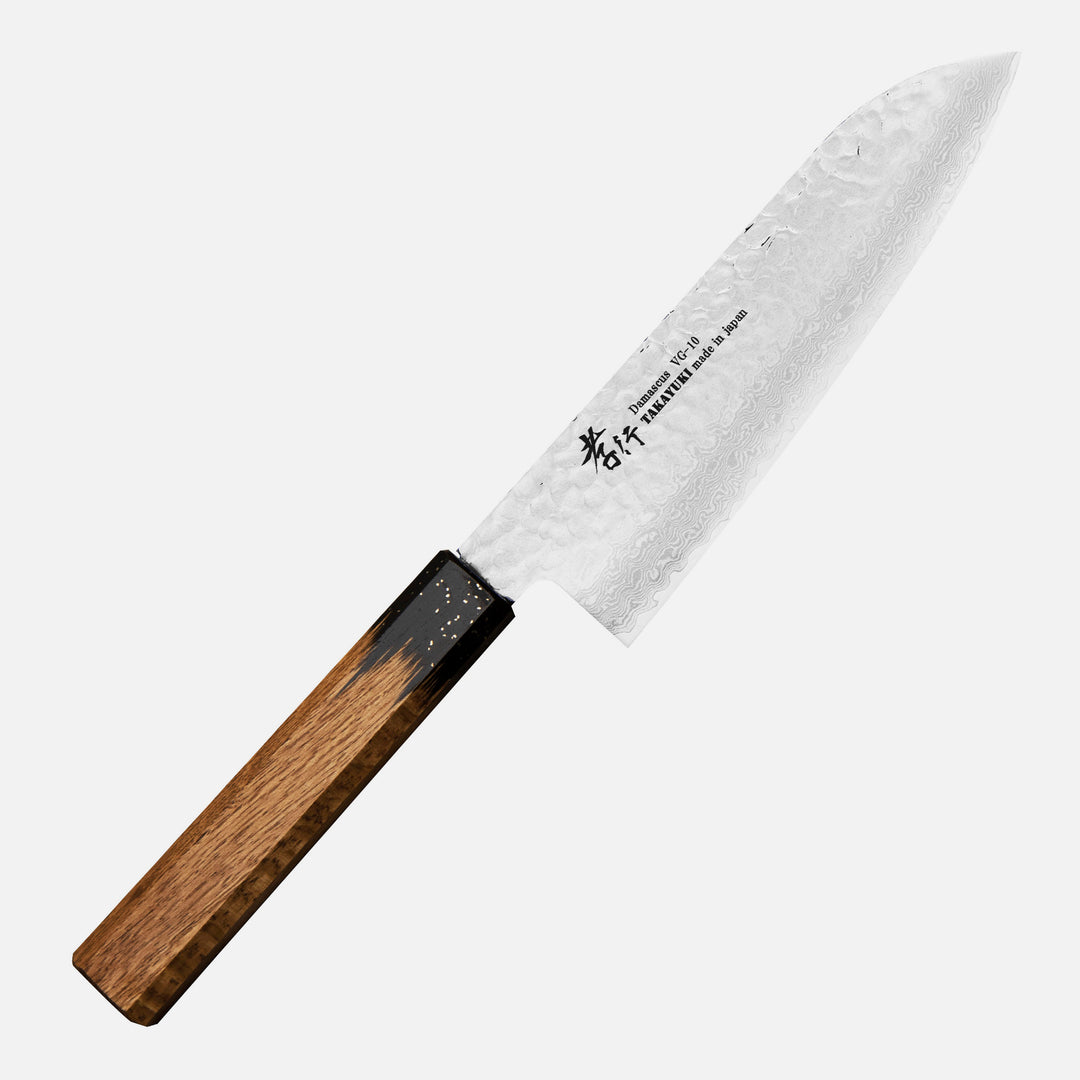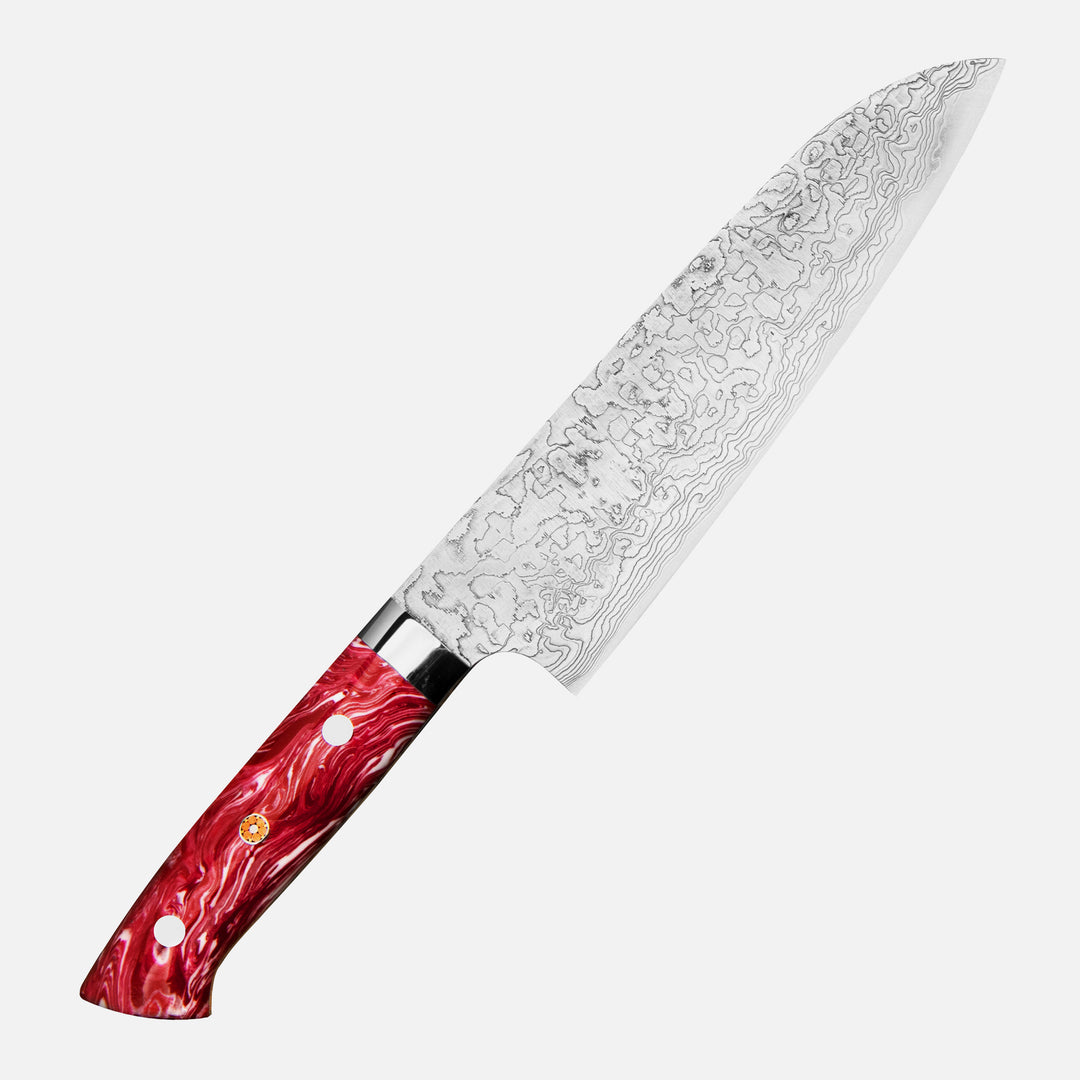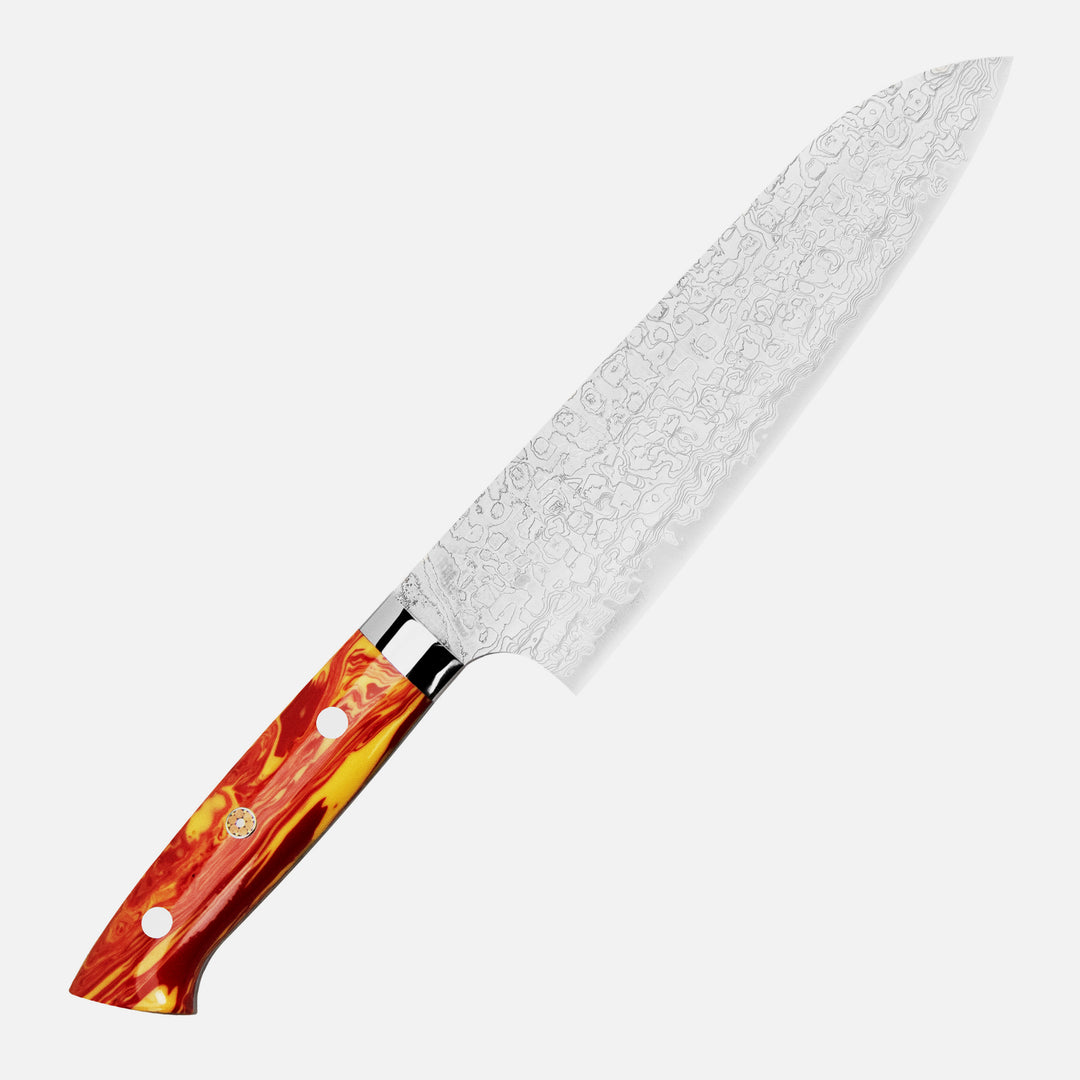Santoku/Multi-purpose
The santoku ("knife of the three virtues") is the most popular knife in Japanese households, it evolved from the shape of the nakiri knife. After the industrailization of Japan, when it became common to have a refrigerator, the widespread possibility of buying meat and fish, traditional knives such as deba and usuba began to be replaced by santoku and gyuto. The first one is shorter, it measures from 14 to 20 cm of the blade, making it suitable for smaller kitchens, and is taller, making it more convenient to cut vegetables, and the tip allows for more precise handling and cutting. The grinding of the Santoku knife allows you to cut the product with one movement of the blade without the need to rock the knife.
Santoku made in traditional Japanese style has a handle made of wood; the most commonly used is magnolia, slightly less frequently rosewood, cocobolo, ebony, chestnut, oak, walnut, ash or other, and a plastic ring, buffalo bone into which is fitted an elongated steel rod coming from the blade. The traditional way of making the knife lighter and balanced towards the blade. The European style of performance, on the other hand, is characterized by a full-tang construction where the steel coming from the blade usually passes through the entire length of the handle, which causes a greater weight of the knife and a shift of the balance towards the user's hand.
It is popular in two-sided sharpened variants, much less often this knife shape is seen as one-sided sharpened. The cut of knives that are made in Japan is usually asymmetrical to emphasize the sharpness and cause the blade to flow through the product being cut. This feature definitely distinguishes them from the competition from the west. An additional advantage is the use of the technique of forging the core of hard soft steel, which additionally protects, makes it more flexible and creates a unique hamon pattern on the blade, making each knife individually unique.


